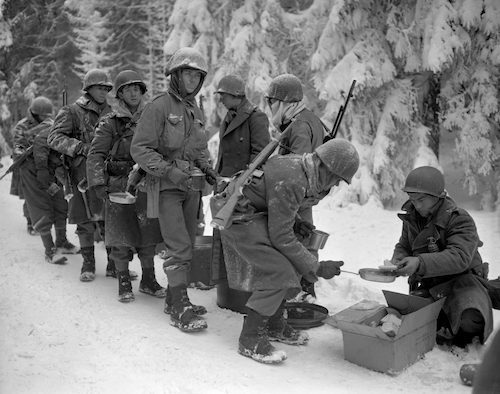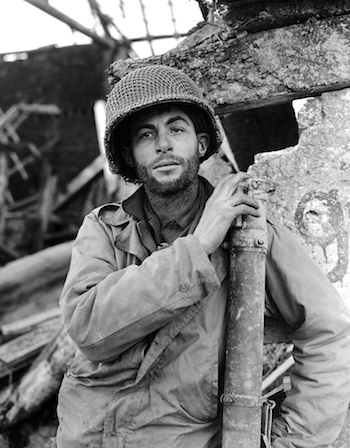Communiqué
Epic 15-hour film “The War” from Ken Burns returns to WOUB Thursdays at 9 p.m. starting September 29
< < Back to first-time-in-eight-years-woub-tv-to-encore-the-war-from-ken-burns-thursdays-at-9-p-m-starting-july-23THE WAR
Thursdays at 9 p.m. – Starting September 29
Directed by Ken Burns and Lynn Novick
In the spring of 1945, as the war in Europe drew to a close, the CBS radio correspondent Eric Sevareid was troubled. He had been reporting on the fighting for four years, and had done his best to convey to his listeners back home all that he had seen and heard in Burma, France, Italy and Germany. But he was haunted by the sense that he had failed. He told his audience:

“Only the soldier really lives the war. The journalist does not — war happens inside a man — and that is why, in a certain sense, you and your sons from the war will be forever strangers. If, by the miracles of art and genius, in later years two or three among them can open their hearts and the right words come, then perhaps we shall all know a little of what it was like — and we shall know then that all the present speakers and writers hardly touched the story.”
We have striven to create a documentary film series about the Second World War in that spirit. Ours has been, in part, a humbling attempt to understand “the things men do in war, and the things war does to them” (as Phil Caputo so aptly noted). We chose to explore the impact of the war on the lives of people living in four American towns — Mobile, Alabama; Sacramento, California; Waterbury, Connecticut; and Luverne, Minnesota. Over the course of the film’s nearly fifteen hours more than forty men and women opened their hearts to us about the war they knew — and which we, their inheritors, could only imagine.
Above all, we wanted to honor the experiences of those who lived through the greatest cataclysm in human history by providing the opportunity for them to bear witness to their own history. Our film is therefore an attempt to describe, through their eyewitness testimony, what the war was actually like for those who served on the front lines, in the places where the killing and the dying took place, and equally what it was like for their loved ones back home. We have done our best not to sentimentalize, glorify or aestheticize the war, but instead have tried simply to tell the stories of those who did the fighting — and of their families. In so doing,

we have tried to illuminate the intimate, human dimensions of a global catastrophe that took the lives of between 50 and 60 million people — of whom more than 400,000 were Americans. Through the eyes of our witnesses, it is possible to see the universal in the particular, to understand how the whole country got caught up in the war; how the four towns and their people were permanently transformed; how those who remained at home worked and worried and grieved in the face of the struggle; and in the end, how innocent young men who had been turned into professional killers eventually learned to live in a world without war.
Over the course of seven episodes, we spend a great deal of time in battle — on the ground, in the air and at sea, in Europe and the Pacific — examining in countless ways and from many perspectives what one of our witnesses, Paul Fussell, described as “the real war.”
“The rest of it,” he told us, “is just the show-biz war. The real war involves getting down there and killing people. And being killed yourself or just barely escaping it. And it gives you attitudes about life and death that are unobtainable anywhere else.”
Throughout the series, one theme has stayed constant, one idea has continually emerged as we have gotten to know the brave men and women whose stories it has been our privilege to tell: in extraordinary times, there are no ordinary lives.
The Second World War was fought in thousands of places, too many for any one accounting. This is the story of four American towns and how their citizens experienced that war.

